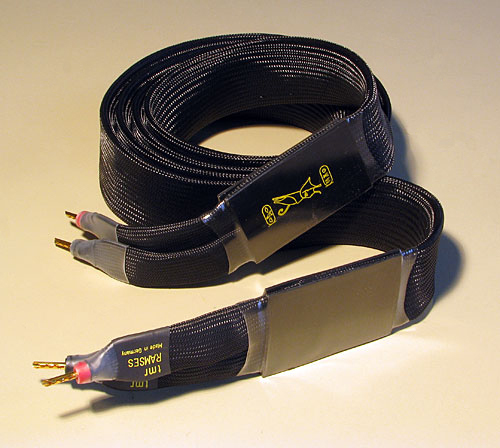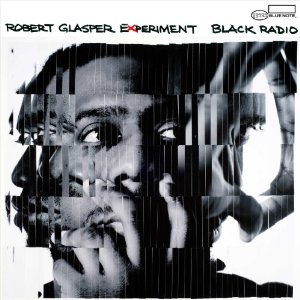Ramses-II speaker cables and Interconnects

 Munich’s High End show is held each May and it is the best audio show I’ve attended. It is the equivalent of our Consumer Electronics Show but is far more attractive. Serving as Europe’s annual meeting place for the unveiling of new and exciting high-end audio products, it’s a venue that also attracts manufacturers from all over the globe.
Munich’s High End show is held each May and it is the best audio show I’ve attended. It is the equivalent of our Consumer Electronics Show but is far more attractive. Serving as Europe’s annual meeting place for the unveiling of new and exciting high-end audio products, it’s a venue that also attracts manufacturers from all over the globe.
Kurt Hecker, president of Europe’s High End Society, and his fellow members, are the folks responsible for putting this huge event together each spring. Hecker has a reputation going back 25 years as a discriminating ear for fine, high-end cables. Of all the cables he’s represented over the past quarter-century, Hecker’s most auspicious product to date, in his own opinion, is the Ramses II cables—here under review.
Since 2003, whenever I attended the High End show I’d usually see Hecker at his booth and, naturally, extend my hand in greeting…and maybe take a picture. Hecker has always seemed a serious chap. So much so, in fact, that I think last year was the first time I actually got him to smile for my camera. His succinct comment that “My Ramses-II cables are the best cables I’ve ever heard” is something I first heard him say in 2009. It was only at the 2011 High End Show that I was given an opportunity to audition them.
Ramses-II speaker cables and interconnects are designed by engineer Thomas-Michael Rudolph who lives and works in Berlin. They are flat and thin like Nordost, but that’s where the similarities end. Rudolph designed his ribbon geometry specifically to prevent uneven frequency response. This is accomplished with a cross-section of super-thin conductors in a side by side pattern. Teflon was deliberately avoided—Hecker attributes this as a major contributor to the cables’ natural sound. Only ‘natural materials’ are used in the construction of the Ramses-II. The specifics are, not surprisingly, proprietary..jpg)
The cables arrived in a small wooden crate—a nice touch. They are good looking, though I would have preferred them in black mesh instead of grey. I would also have preferred spade connectors instead of the banana connectors they came with [ironically, in Germany, they come standard in black mesh. The grey designates the “rest of the world” I assume. Also the speaker cable’s price is the same whether in spade or banana connectors. The interconnects in XLR are 20% more expensive]. They appear to be well-made, and are neither heavy nor stiff, so swapping them in and out was easy.
The Ramses-II interconnects use Eichmann Bullet RCA plugs. I’ve found cables using the Eichmann plugs to be the most transparent due to fact they build their connectors with plastic in attempt to employ the least amount of metal. Aside from being thinner and having its designer’s initials “t m r” highlighted in lower case over a “Made in Germany” stamp, the Ramses-II interconnects are identical in construction to the speaker cables.
Ribbon cables have inherently low levels of capacitance but may also have lethal doses of inductance which can cause stability issues with certain amplifiers. I was relieved to see that my Behold Gentile had no adverse reactions whatsoever. Speakers used were the TIDAL Piano Ceras, while speaker cables were the lower priced Bybee Super Effect Golden Goddess ($3500). The CD player was the North Star Model 192 and USB DAC 32 made in Italy.
 Robert Glasper is an up and coming jazz pianist. But he’s not your typical contemporary jazz player; he’s experimented with different styles, recording special effects and, most importantly, performing with soul singers and rapp artists. Sort of places himself in a neo-jazz-soul category that I find most addicting. Female bassist, singer and writer Meshell Nnegdeocello performs in similar style so it’s not surprising to see her name featured on this, Glasper’s latest project entitled Black Radio. Of the cuts on Black Radio, I’ve really become really fond of the funky and hypnotic tune Cherish the Day, (that was originally penned by Sade) and features Lalah Hathaway.
Robert Glasper is an up and coming jazz pianist. But he’s not your typical contemporary jazz player; he’s experimented with different styles, recording special effects and, most importantly, performing with soul singers and rapp artists. Sort of places himself in a neo-jazz-soul category that I find most addicting. Female bassist, singer and writer Meshell Nnegdeocello performs in similar style so it’s not surprising to see her name featured on this, Glasper’s latest project entitled Black Radio. Of the cuts on Black Radio, I’ve really become really fond of the funky and hypnotic tune Cherish the Day, (that was originally penned by Sade) and features Lalah Hathaway.
The first thing I noticed was how clearly and translucently Lalah’s husky voice was presented by the Ramses-II amid a loud background of synthesizers, heavy drum beats and bass notes. And the Ramses-II never got in the way of Lalah’s command of emotion. I also got a sense of added soundstage width and harmonic rightness, as well as a more natural portrayal of instrumental timbre. Nothing was exaggerated or extended in the frequency extremes. Neutrality is a pivotal word in describing the Ramses-II. Bass was natural, taut and well focused with a sense of surefootedness that was impressive.
Compared with the Bybee Super Effect speaker cables, the Ramses enhanced the space between musicians but did not elicit the same level of dynamic prowess as the Bybees. However, I would give the Ramses-II the edge in ease and fluidity. There’s no doubt they sound open, free and clear of any restrictions whatsoever. There is an airiness and aliveness to the high-frequencies. I am well aware that many flat, ribbon cables create this effect. However, I’ve always been disappointed by their lack of warmth and body. Not so with the Ramses-II.
What I found even more surprising was that the Ramses-II possess an ever-so-slightly purer feel between the instruments and notes, and as a result, they give a more realistic presentation of tonality—especially when listening to a great pianist like Robert Glasper.
Taking the show on the road again….
I’ve had the luxury of having certain StereoTimes contributors living not too far from me in Jersey City. One of them is Debra Goidel, who recently wrote a review on affordable JAS electronics and MM-3 mini-monitors (here). I visited and we experimented with the pricey Ramses-II in her insanely affordable high-end rig. Improvements to dynamics, tonality, image density and frequency extension were immediately to be heard. However, since the Ramses-II cables cost more her entire system (!), the experiment was not exactly realistic. But it did demonstrate that after-market cables can make big improvements even in affordably priced high-end systems.
Dennis Parham has a much more sophisticated and expensive rig than Debra, including Sunny horn loudspeakers ($20k), Laufer Teknik Memory Player ($12k) and Beyond Frontiers Tulip hybrid amplifier ($18k). Dennis also uses Bybee Super Effect speaker cables and considers them the best he’s owned. It took but a few riffs from trumpeter Sean Jones’ Come Sunday, for Dennis to recognize the same sonic virtues the Ramses-II had delivered in my downstairs system. The high-frequency extension presented a more open and transparent window into the music. The trumpet had a more brassy resonance and more believable presence. I was also impressed at how the soundstage improved in terms of image density and specificity. As I expected, the bass and dynamics were tuneful but didn’t seem as impactful as with the Bybees. This might be the result of high-frequencies sounding a tad more damped with the Bybees.
Both Dennis and I agreed that the Ramses-II cables bring a sense of musical aliveness and transparency that Bybee cables do not. And although the Ramses-II do not possess the bottom end of the Bybees, Dennis wanted the Ramses-II for his new reference. I would have to agree with Dennis on his choice. An improvement in purity is ALWAYS a big deal if you ask me. Dynamics, on the other hand, are a hard thing to give up but fortunately there was enough left in the music to qualify the swap as a win-win situation (Kurt Hecker was honored to hear this). Now I understand why Hecker was so full of praise when he introduced the Ramses-II.
In the end, I don’t know what gives the Ramses-II cables their magical sense of openness and their natural overtones, but I do know they have performed beyond my expectations. Priced at $4,500 and $1,400 respectively for speaker cables and interconnects, they are rather expensive. However, considering how they surpassed the equally priced Bybee Super Effect speaker cables in overall naturalness and transparency, they are a cost-effective investment. If you’re looking for a cable that possesses a very natural footprint—and is as musically expressive as they come—then you owe it to yourself to give the Ramses-II an audition. Highly recommended!

Price: Ramses II speaker cables $4500.00 per eight-foot; Interconnects $1500.00 per meter (RCA). Add 20% for XLR connections.
Company Info:
KURT HECKER marketing
Fuchshohl 78 A
60431 Frankfurt am Main
Germany
e-mail info@kurthecker.com
web-site www.kurthecker.com
Stereo Times Masthead
Publisher/Founder
Clement Perry
Editor
Dave Thomas
Senior Editors
Frank Alles, Mike Girardi, Russell Lichter, Terry London, Moreno Mitchell, Paul Szabady, Bill Wells, Mike Wright, and Stephen Yan,
Current Contributors
David Abramson, Tim Barrall, Dave Allison, Ron Cook, Lewis Dardick, John Hoffman, Dan Secula, Don Shaulis, Greg Simmons, Eric Teh, Greg Voth, Richard Willie, Ed Van Winkle, Rob Dockery, Richard Doran, and Daveed Turek
Site Management Clement Perry
Ad Designer: Martin Perry





Be the first to comment on: Ramses-II speaker cables and Interconnects